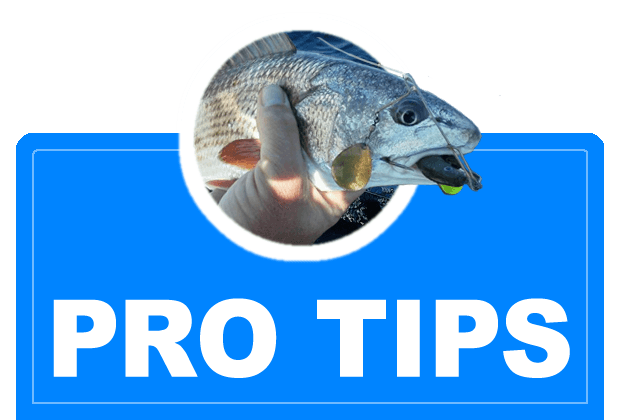Surf Fishing Southeastern North Carolina (Part 1)
In general, surf fishing is a very healthy, relatively easy and greatly satisfying way to fish. It opens an
avenue to catch many different types of fish all the while enjoying often breathtaking scenery.
Southeastern N.C. offers many places to fish including Topsail Beach, Wrightsville Beach, Carolina
Beach, Kure Beach and Fort Fisher beach areas. Before you set out looking for the big ones, be sure
to obtain your N.C. Saltwater Fishing License. You can do so online easily at this website.
What to look for? Our coastline is home to many fishes. How to catch them may seem a challenge; but it
is one that with a little knowledge you can be quite successful. To start you need to know the area you
intend to fish. Long stretches of smooth flat beaches with gentle waves may be beautiful, but the more
turbid areas with bars and sloughs, drop offs and cuts, will produce more fish. Inspecting your area,
whether it is two blocks long or two miles long is best done at low tide. That is when the coastline gives
up its information. You can easily see if there are deep sloughs between the beach and the outer sandbar.
You can see where the breakers are and if there are any cuts through them for fish to lie in wait for
defenseless baitfish to be swept through by the current. Rarely is it necessary to cast more than just past
the breakers. Also, unlike the outer banks, where 11’ “Hatteras Heavers” are the norm for casting long
distances, a seven to eight foot rod is all you need.
While we are near the subject, let’s talk about tackle. As I said, a seven to eight foot rod is all you need.
For light bait or small artificials, such as trout fishing, a medium light action rod paired with nothing
bigger than a 3000 size reel and ten to fifteen pound test line is all you need. Out to catch whatever bites,
go with a medium heavy action rod and pair it with a 4000 or 5000 size reel with twenty pound test line.
My personal preference and supported by many professionals is braid fishing line. If you are fishing for
big red drum near an inlet, I would use a heavy action rod and up to a 6000 size reel. Choose the one you
need for what you are targeting or carry all three and be ready for anything.
If you enjoy fishing with artificials, there are several choices. Metal baits include Hopkins lures,
Stingsilver, Castmaster, and a tackle box full of others. Other, softer and lighter baits include ¼ to ½
ounce lead heads rigged with you favorite curly tail, paddle tail or swim bait. The metal baits can be cast
far and reeled in fast with a few pauses (indicates injured baitfish). The softer baits should be cast to the
far point of the slough, allowed to sink, and then popped and twitched slowly through the slough hoping
to entice a strike.
This is a good spot to pause to let you absorb the intent of this article. In Part 2, we will talk about natural
baits and their presentation. We will also discuss what baits are “best” for what fishes.
I hope you are enjoyed Part 1 of Surf Fishing. Check back often for Surf Fishing Part 2 and future articles. And, if you
need a quality surf rod or any other rod, I can build you one just like you want it!
Good Fishing!
Capt. Rick Bennett, Ret.
www.rod-man.com
rodman@rod-man.com
A lifetime fisherman, Capt. Rick Bennett, better known as the Rod-Man,has retired from the day to day activities as a charter boat captain but does offer “ON YOUR BOAT” Guided Fishing Trips. Capt. Rick will show you the when, the where and the how. From rod and reel selection to terminal tackle to bait, Capt. Rick has the know how.
- Choosing the right fishing line
- Better Casting Can Mean More Caught Fish
- Saltwater Fishing late May and into June
- Flounder from an Artificial Perspective
- Local Carolina Beach fishing in the month of April
- How to Build Your Own Custom Fishing Rods (Part 5)
- How to Build Your Own Custom Fishing Rods (Part 4)
- How to Build Your Own Custom Fishing Rods (Part 3)
- How to Build Your Own Custom Fishing Rods (Part 2)
- How to Build Your Own Custom Fishing Rods (Part 1)
- Surf Fishing Carolina Beach, North Carolina (Part 2)
- Exciting shark fishing for everyone.
- Fishing for Mahi-Mahi
- “Specialty” Gear for Inshore Fishing
- Fishing for Spanish Mackerel
- Cobia fishing trips and tips, hard fighting, good eating
- Fishing tips on how and where to catch Black Drum
- How to catch Speckled Trout fishing tips and tricks
- How to catch Flounder, flounder fishing tips and tricks
- How to catch redfish, red drum fishing tips and tricks
- Reds and trout and some flounder are biting on artificials
- Atlantic bonito have been caught at the near shore AR’s. Bluefish have been plentiful.
- The wahoo bite is good and some blackfin tuna and sailfish are in the mix.
- Kings are still way out, but the Gulfstream is producing wahoo and blackfin tune.


